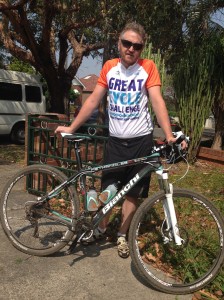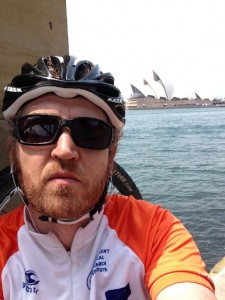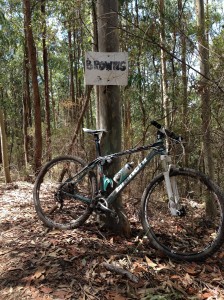As promised yesterday, here’s another Open University series on cycling, The Science Behind The Bike, starting with the History of the hour record and covering technology, physiology and the physics underlying the whole thing. Enjoy!
The Maverick Series is here
Australia now has an embarrassment of riches in terms of XCM racing, and yesterday that lineup was further strengthened by the announcement of the Maverick XCM Series.
The name is something of a thumbed nose towards the Real Insurance XCM Series, which formerly included two of these races but was dropped for 2013 and revamped for 2014 without its former flagship events, but with the backing of Cycling Australia, who have ambitions to integrate it into the national XCO and DH series, thus making it a far more national-scale event. From this it will gain a far wider reach but possibly alienate some of the XCM-faithful who could formerly ride each and every Real Insurance XCM event, but will now be hit with huge logistical hurdles if they want to do the same in 2014.
Obviously more than a few people were annoyed by the whole thing. Hence, I assume, the name of the new series. Continue Reading →
The Design Behind The Bike
I’ve been watching this excellent series from the UK’s Open University on the subject of design in cycling. It’s a fascinating helicopter view of bike design from several angles. Enjoy!
15/140
The last couple of weeks have been pretty tough. In Sydney and London, my two most recent home cities, cyclist deaths have been mounting up, and naturally nerves are wearing somewhat thin. For my part I’ve been alternating between despair and fury over the situation. I either want to stay at home and never ride again, or I want to go out and kick some wing mirrors off.
In the press and on the blogs, much ink has been expended on the fact that the Amy Gillett Foundation’s “A Metre Matters” campaign needs to be implemented here and it needs to be implemented now. With this I strongly agree – though I personally think more than a metre is needed.
Very few column inches, however, have been expended on the fact that we already have safe overtaking laws, right now.
In NSW, rule 15 defines vehicles. It is abundantly clear over the fact that a bicycle, for the purposes of the rules, is a vehicle.
We are not second class citizens on the road.
Many road users, cyclists included, seem to be entirely ignorant of this, so let me just underline it – because it’s important for what follows. A bicycle, for the purposes of road rules, is a vehicle, and therefore carries all the rights and responsibilities that any other vehicle carries – with some specific exceptions.
Further down the rules, you come to Division 3: Overtaking. Within this division, rule 140 forms a master template for safe overtaking between vehicles. It’s pretty clear and unequivocal
A driver must not overtake a vehicle unless:
(a) the driver has a clear view of any approaching traffic, and
(b) the driver can safely overtake the vehicle.
Let’s just repeat that
A driver must not overtake a vehicle unless:
(a) the driver has a clear view of any approaching traffic, and
(b) the driver can safely overtake the vehicle.
This rule, part B of rule 140, would cover every single one of the dangerous overtaking moves that I’ve experienced as a cyclist, and criminalise them with 20 penalty units. What we seem to lack is general knowledge of this rule, the fact that it applies to overtaking cyclists, and meaningful enforcement. Being inside a metre is emphatically not safe. A driver passing this close has breached rule 140.
NSW Police, and more broadly all jurisdictions in which similar laws exist – yes, they exist in the rest of Australia and in the UK too – could be enforcing this rule right now. But they never seem to bother. What we get is mealy-mouthed excuses and instead of being charged under rule 140, drivers are sent on their merry way with a mere warning – or at best an incorrect charge – while at the side of the road, the ambulance service and the health system is left to pick up the pieces.
Enough is enough.
If, like me, you’ve over it, may I suggest you write to the NSW Police Commissioner and demand that rule 140 is enforced, in the absence of more specific one metre rules. Demand that his officers correctly handle collisions and near misses when reported. Write to your local politicians and press home the point that we need a metre or more, and mention that we already have unenforced laws which can handle this. And if you have driver friends who aren’t aware of these rules, tell them. Make sure they know that if they can’t get past a bike with a safe margin, then they must not overtake. Make sure they also know that bikes are vehicles and therefore they are treated as such – at junctions, roundabouts and when emerging from parking spaces. Give way, give space.
This needs to change. Enough people have died.
Now that’s how to transport a bike

Found via @stravacycling on Instagram.
But I think to myself: where do I keep the shoes, helmet, toolkit, spare wheels, energy gels, electrolyte, recovery drink, arm warmers, leg warmers, rainproof shell, spare jersey, spare tubes, multitool, tyre levers, gloves, eyewear, spare eyewear lenses, lights, sunscreen, garmin, water and all the other nonsense that gets packed into my van on race day?
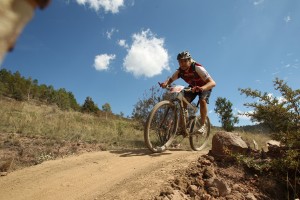
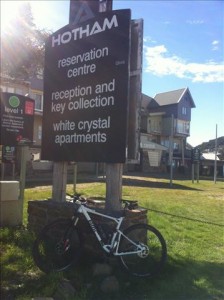

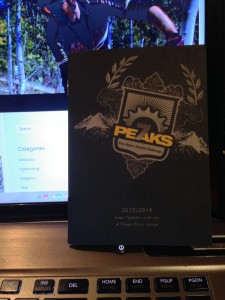
 Yep, the 2013
Yep, the 2013 
